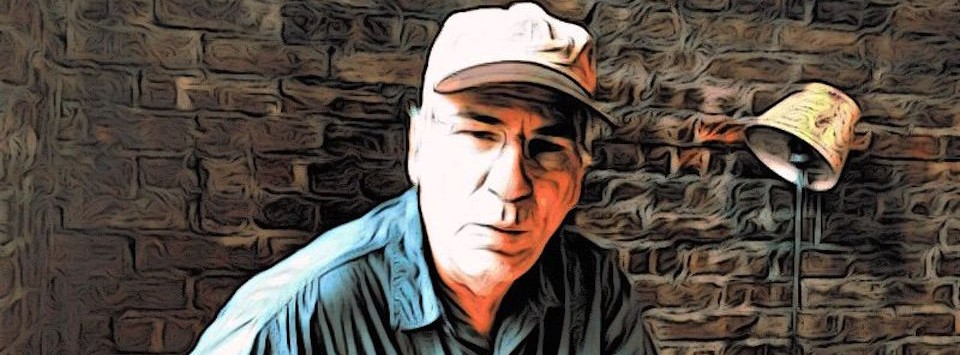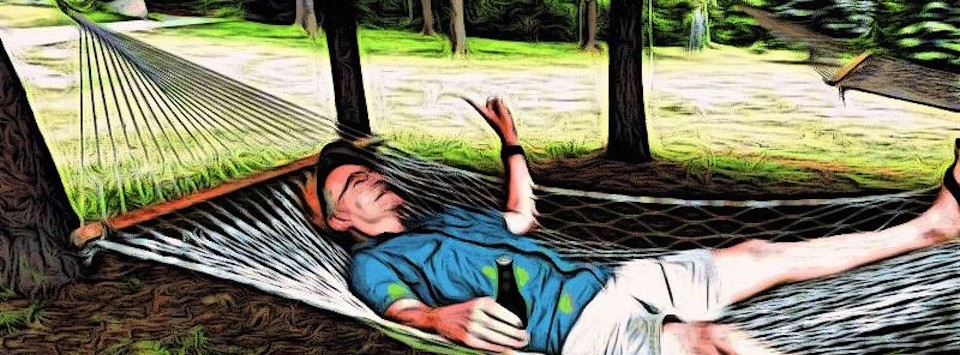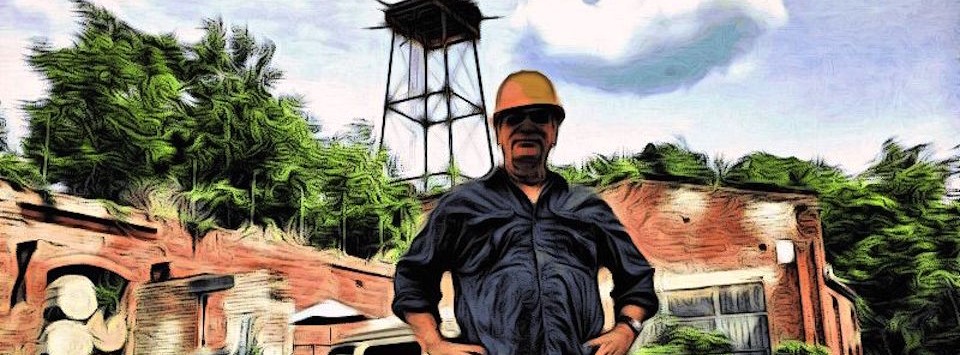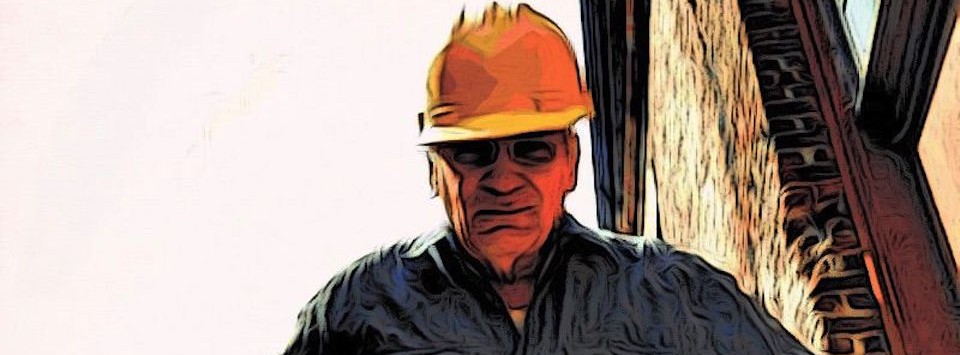Bretzian Geology
A Flood of Ideas
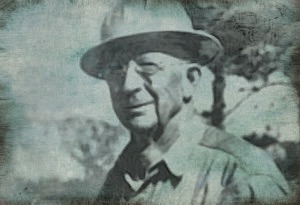
J Harlen Bretz, 1949
Geologists have a tendency to get really worked up about flood-related theories. Early in the history of the science, the Biblical flood provided the foundation for most every claim, and we approached all of geology in that context.
Evidence built up over time until it forced the geological community to acknowledge that nothing of the sort had happened. In fact, they went so far as to construct a doctrine called uniformitarianism, which claimed that all past geological processes are the same as the ones operating now.
Then, in 1920, a geologist named J Harlen Bretz developed a new set of flood theory that would shake things up all over again.
Bretz's research and field work led him to propose a series of absolutely catastrophic floods in the Pacific Northwest. I won't go into all the various iterations of the idea over the years, but the floods as we understand them now are far more destructive than almost any other geological events today.
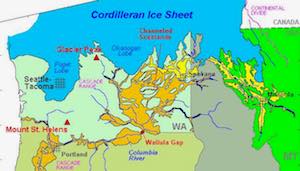
The Cordilleran
During the ice ages, the Cordilleran continental ice sheet dwarfed any glacier existing today. It and its several sibling glaciers around the world held enough ice to lower the sea levels by hundreds of feet. As the temperature gradually increased, however, a massive lake, around the size of one of the Great Lakes, began to melt into the top of the ice sheet, somewhere in Western Montana.
Over time, cracks began to grow in the massive ice dam holding the lake in, until it finally shattered, releasing all the water at once. The floodwaters would have moved between 45 and 60 miles per hour, cresting at over 400 feet tall in the Columbia River Gorge and the Willamette River Valley.
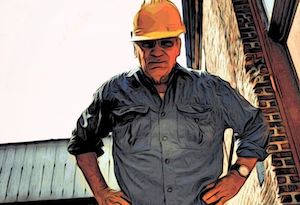
McCoy Fields, 2017
Flood waters carried enormous boulders as though they were twigs, deforming entire landscapes. The debris from the flood flowed hundreds of miles through Idaho and Oregon, and from there well into the Pacific Ocean.
Oh, and there wasn't just a single flood. The ice sheet eventually formed a new lake and the cycle repeated itself as many as forty times. This all took place well before any humans arrived in North America.
The geological establishment resisted Bretz’s ideas for years, but Bretz and his allies eventually won the day in a crushing victory. Decades later, Bretz complained that he no longer had any enemies to gloat over.
_________
Quotable
Yes, Yard Ramp Guy: Now, here’s a quotation:
“Nature gave men two ends -- one to sit on, and one to think with. Ever since then man's success or failure has been dependent on the one he used most.”
— Robert Albert Bloch
Discursive on the Gamburtsev
To Climb These Mountains, You Need to Dive
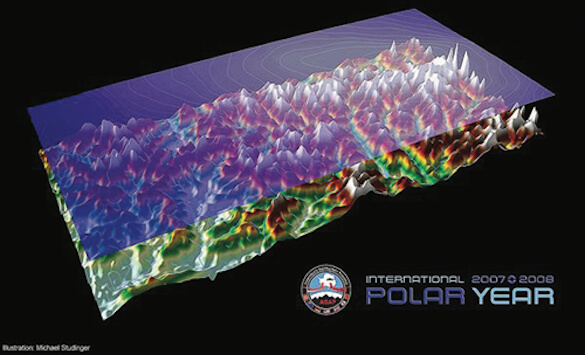
The Gamburtsev Discursive
There's a mountain range on Earth that no human has ever seen.
The Gamburtsev Mountain Range is about the size of the European Alps and are as rugged as the Rocky Mountains. Why has no one ever seen the mountain range? Because it's buried underneath 10,800 feet of ice in Antarctica.
Oh, and water flows uphill there.
One of the more interesting aspects of the Gamburtsevs is the ruggedness to them. They're more than a hundred million years old. By now they should have eroded enough to resemble the Appalachians, instead of looking like the Rockies.
Scientists today think the mountain range has actually been preserved by the ice above it—a counter-intuitive result, since absolutely nothing erodes mountains faster than glacial ice in normal circumstances.
The Antarctic ice sheets are so thick, however, that the ice starts to behave in a bizarre manner. As the pressure grows stronger farther and farther down into the ice sheet, the freezing point of water starts to drop lower and lower, until liquid water eventually exists at the bottom; the freezing point of water down there is simply just too low. The pressure actually forces the water to flow uphill!
We've identified other mountain ranges that were presumably buried underneath ice sheets during the Ice Age, including the Torngat Mountains in Canada and the Scandinavian Mountains.
If the ice in Antarctica ever melts, one effect will be that the mountains (currently with an average height of 8,850 feet) would rebound upwards. Ice sheets are so heavy that they actually press the continental crust downward into the mantle.
Removing the Antarctic ice sheets would cause the Gamburtsevs to rebound back up to 10,800 feet in height.
Thankfully, we're not likely to see them any time soon. Even the worst models for global warming don't predict that rebounding scenario as extremely likely. Which is a good thing because it would raise the sea level some 200 feet.
_________
Quotable
Dear Yard Ramp Guy: Oh yes—a quote for you:
“O, what a tangled web we weave; When first we practice to deceive!”
— Sir Walter Scott
Norwegian Gratitude
Seeding the Svalbard Archipelago
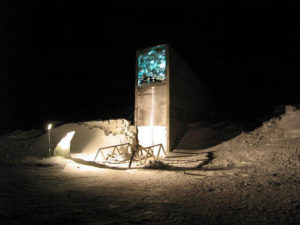
Entrance to the Svalbard Vault
These days, we’ve come to expect powerful governments and military forces building bunkers underneath mountains.
For example, China has an underground network of tunnels for ferrying nuclear weapons, and the United States has a vast operations center for NORAD under Cheyenne Mountain.
One of the most secure of all these underground facilities is somewhat surprising, though. The Norwegians built it, and they use it for plants.
They constructed the Svalbard Global Seed Vault to hold a wide variety of plant seeds that are duplicate samples of seeds held in gene banks from around the world.
Its intended purpose is to provide a form of insurance: as a backup should we lose other seed gene banks or if we experience large-scale crises on a regional or global scale.
By request of the Norwegian government, the vault holds no genetically modified seeds. Engineers built the structure 390 feet inside a sandstone mountain on the Svalbard archipelago, an Arctic island chain that is one of the coldest places on the planet.
Svalbard lacks tectonic activity, ensuring the vault is safe from earthquakes. The surrounding permafrost helps keep the vault cool; even if the refrigeration units failed, it would take several weeks for the facility to rise to the surrounding sandstone's temperature, which would remain below freezing. And the bunker is 430 feet above sea level, so even if the ice caps completely melt it won't be flooded.
The vault's primary purpose isn’t to provide new seeds to a region facing a major disaster (though it can do that in a pinch). Instead, Svalbard is there to restock smaller gene banks around the world in case they've been affected by a disaster or have lost seeds to mismanagement.
It's best to think of it as a bank to which other banks can make deposits (those being the world's 1,750 other seed banks).
In fact, they're often called to do so: in 2012, the Philippines lost its entire seedbank to flooding and fire and received assistance from the Norwegian initiative.
_________
Quotable
Oh, Yard Ramp Guy: Please regard my reverse-alphabetical entry this week...
“Plenty of people miss their share of happiness, Not because they never found it, But because they didn't stop to enjoy it.”
— William Faulkner
The QWERTY Blues
Or: Was the Dvorak Like Betamax?

Just My Type
The first time I asked someone why the letters on a keyboard were positioned the way they were, I heard that it was organized in the QWERTY format to slow typists down in order to prevent the keys from jamming.
This was only a few years ago (so many topics and so much information to explore: for some reason, I'd just never wondered about it before then), and typewriters were long out of vogue. This, of course, led to the question of why the keyboard hasn’t really changed.
The standard explanation for QWERTY sticking around has to do with institutional inertia. Once an organization, company, or even nation is accustomed to using a specific system, switching over becomes much, much harder. There are retraining costs, equipment replacement costs, and plenty of people who just don't like change. (And yes, in all fairness: I'm one of them, half the time.) It's the same reason that the United States is one of the only countries to not have switched to the metric system.
There are alternatives to QWERTY, of course. Dvorak is the best known instance. Dvorak claims to gain greater accuracy and speed in typing by moving the vowels to home row and by making sure the most frequently used letters were on the right side of the keyboard, among other changes.
Well, it turns out that the whole QWERTY origin story was actually wrong. Typewriter design flaws weren't responsible for the QWERTY keyboard layout. In fact, it was actually designed to be more efficient for telegraph operators—the letter positions were arranged to work better for the particular quirks of Morse code, stretching back to the very first mass marketed typewriter.
What about Dvorak? Well, it does seem to provide a small typing speed advantage…but not a significant one. It turns out that most of the studies about Dvorak were pretty poorly run; Dr. August Dvorak, the Dvorak’s creator ran the most famous study—yes, it showed the Dvorak in an extremely positive light.
And the small typing speed advantage it offers certainly doesn't counterbalance the literal billions it would cost to retool the computers in America alone.
Anyway, if we were really that worried about faster typing speed, we'd just switch to stenography instead, which more than triples the speed of Dvorak or QWERTY.
No offense to Dvorak or stenography, but I'll stick to the keyboard that came with my computer.
_________
Quotable
Okay, (other) Yard Ramp Guy. Question it all, my friend:
“Quality is never an accident; it is always the result of intelligent effort.”
